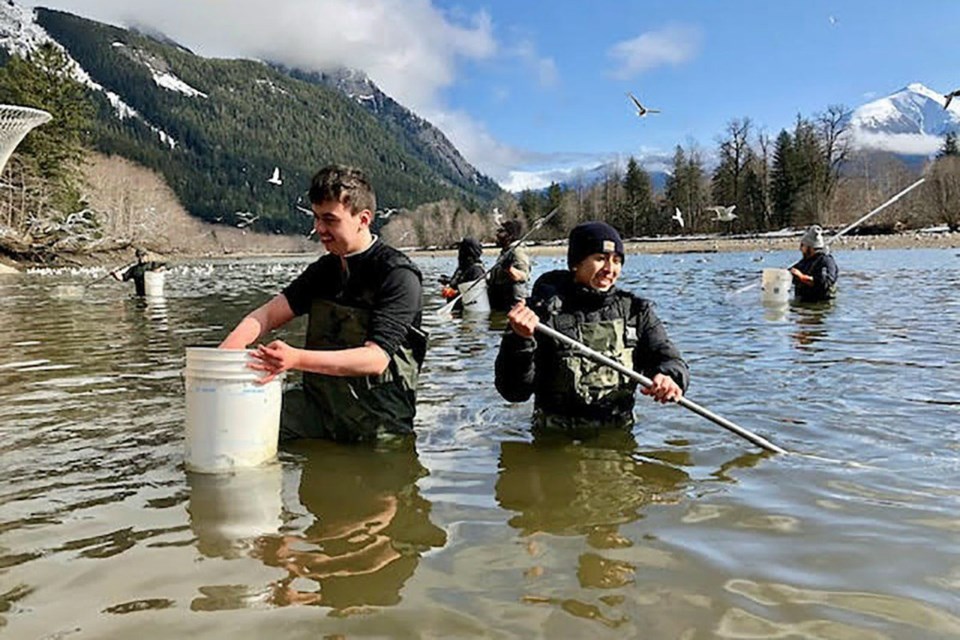A new collaboration between two courses at Charles Hays Secondary School has produced a unique program for students to learn about our region’s geography and scientific career options.
Teachers James Zlatanov and Vania Ling presented their ongoing results of a successful fusion of the geography 12 and specialized sciences 12 (fisheries) classes this year at the March 15 School District 52 board meeting.
One of the primary goals is to get the students on the land and in the water as much as possible, Zlatanov said.
“We’ve tried to localize the course as much as possible,” he said. “We want to be on the territory, to learn about the territory, and to learn about our local environment.”
One of the biggest highlights of the program so far has been a recent field trip to the hooligan run to learn about the region’s natural food resources.
“We have participated in many meaningful local learning opportunities such as learning how to dip net for hooligan on the Skeena River with Ben Spencer and learning how to identify male and female Eulachon with Jeremy Paul,” Ling told The Northern View.
For some alumni, this was an opportunity they had missed out up until now.
“I’ve never been to a hooligan run before,” Logan Phillips, Grade 12 student, said. “It was really cool … I definitely learned a lot more in this class than I did in other sciences.”
Other trips have included Rushbrook Trail, Morse Creek and Butze Rapids, where students recorded and created guides and articles about the environment.
In their classes and assignments, the courses have aimed to tie in Tsimshian language, such as when identifying and labelling endemic flora and fauna, Ling said.
Though the two classes are taught separately from each other, Zlatanov and Ling, work closely together to line up each unit of their courses.
“Say I’m teaching about river landscapes, she’ll be teaching about hooligan fish … to really just connect the possibilities of these science-based or geography-based careers,” Zlatanov said.
By blending the two courses, the duo focuses on teaching regional content with an eye on tying in local professionals in the fields from fishery and geography-based careers in Prince Rupert, Zlatanov said.
“It’s nice learning about local things,” Hayden Wilson, Grade 12 student, said. For Wilson, it’s important they are able to learn about topics relevant to where they live.
The students have been able to learn from an array of regional experts and professionals, including a collaboration with Bruce Watkinson of the Gitxaala Territorial Management Agency, the Department of Fisheries and Oceans, Ecotrust Canada and the Oldfield Creek Fish Hatchery. The program has also worked closely alongside the school district’s Indigenous Education Department.
“This is the type of class I envisioned in my head. It’s relevant, it’s interesting, our students want to learn it and I love this course,” trustee Kristy Maier said.
If this class was available throughout all of the province, it would be filled up 10 times over, trustee Bart Kuntz said.
The origins of this blended program started with a meeting of the science department head and members of regional environmental stewardship societies last year, Zlatanov said.
The group noted there were not a lot of people going into stewardship, fisheries or geography careers in the region and agreed a collaboration would be a great way to present the information and careers available in and around Prince Rupert to encourage students to come back after university or to stay after graduating.



